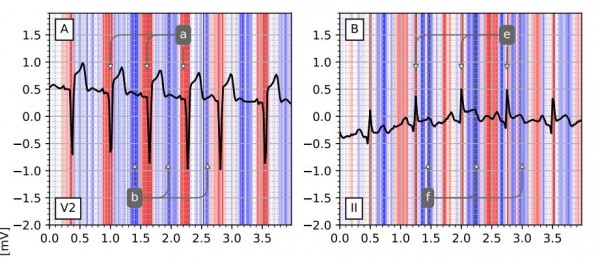Algorithm matches human cardiologists in detecting heart attacks
Medical data tends to be messy and hard to annotate, which makes it hard for neural networks to learn from. But machine learning is beginning to make progress.
A myocardial infarction, or heart attack, occurs when the blood supply to the heart muscle is permanently disrupted by a blockage of some type. The treatment involves either widening the offending artery with a balloon or stent to allow the blood to flow again or circumventing the blockage entirely with coronary bypass surgery.
Either way, the intervention must be timely, and a quick diagnosis can make a huge difference. In the often chaotic environment of an emergency room, however, the signs of a heart attack are not infrequently missed, and the consequences are profound.
So an automated way of accurately and reliably spotting the telltale signs would be a significant step forward. But despite much research in this area, automated heart monitoring systems are significantly less reliable than trained cardiologists.

Today, that looks set to change thanks to the work of Nils Strodthoff at the Fraunhofer Heinrich Hertz Institute in Berlin and Claas Strodthoff at the University Medical Center Schleswig-Holstein in Kiel, both in Germany. These guys have developed a neural network that can spot the signs of myocardial infarction, and they say the machine matches the performance of human cardiologists for the first time.
First, some background. One of the best ways to diagnose a heart attack is to use an electrocardiograph to measure the electrical output from the heart. A standard ECG records the electrical signal from 12 different leads attached to different parts of the patient's body.
These signals reveal the electrical behavior of the heart in various ways. Cardiologists have long known that the signals from some of these leads are more useful diagnostically than others when it comes to heart attacks.
But interpreting the data is hard. A clinician first has to work out some kind of base-level signal, ignore any noise or corrupted data, and then isolate individual heartbeats. The clinician then looks for predefined or automatically detected time intervals and voltage values for each beat.
Finally, he or she must identify the appropriate features in the heartbeat and classify the condition accordingly. The classification process is further complicated by the presence of a signal called an ST elevation. Patients with this signal should be treated as soon as possible, while those without it require further time-consuming tests.
None of these steps is easy. Indeed, they are all made more difficult by irregular or unusual heartbeats, by noise, and by data corruption, all of which are common in an emergency room environment.
So perhaps it's no surprise that in all this chaos, humans significantly outperform machines.
But in recent years, neural networks have made significant progress in pattern recognition problems such as face and object identification. So there is significant interest in applying these techniques to medical data where pattern recognition is also the goal.
Strodthoff and Strodthoff have done just that with a database of 148 ECG records from patients with myocardial infarction and 52 healthy controls. They used a sliding-window technique to feed data to a neural network. Each window included at least three heartbeats.
The team used 90 percent of the data for training a neural network to spot the signs of a heart attack.
The rest of the data was used to test the network, with interesting results. "The proposed architecture beats the current state-of-the-art approaches on this dataset and reaches a similar level of performance as human cardiologists for this task," say Strodthoff and Strodthoff.
What's more, the machines tend to preferentially rely on the data from the same leads that human cardiologists have learned to rely on.
That impressive result shows the potential for intelligent machines to dramatically improve health care. But it is not perfect, of course.
One potential problem is that the data set used here is relatively small. Machine-learning algorithms generally require huge annotated data sets to learn well. Creating bigger data sets of the heart attack recordings will be time consuming and hard. But only with bigger data sets can clinicians be sure the algorithms will be accurate in the wide range of chaotic environments that doctors work in.
But the potential is huge. Machines can relieve some of medicine's tedium and complexity for human doctors—and do it without tiring. And the approach developed by Strodthoff and Strodthoff is generically applicable to any time-series classification problems of raw data from devices such as ECGs and EEGs, which abound in medicine. So other applications are possible
Which means it surely won't be long before most of us are diagnosed, at least in part, by machines.
Ref: arxiv.org/abs/1806.07385 : Detecting And Interpreting Myocardial Infarctions Using Fully Convolutional Neural Networks
Couldn't make it to EmTech Next to meet experts in AI, Robotics and the Economy?
Go behind the scenes and check out our video
0 件のコメント:
コメントを投稿